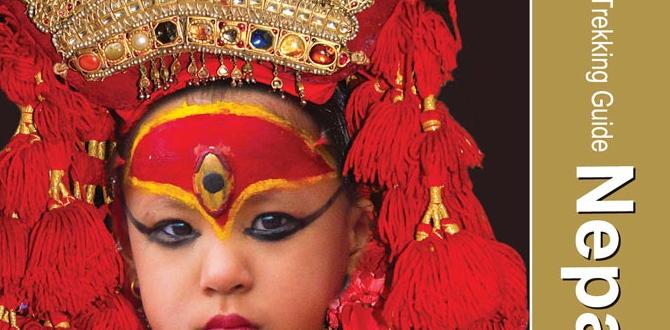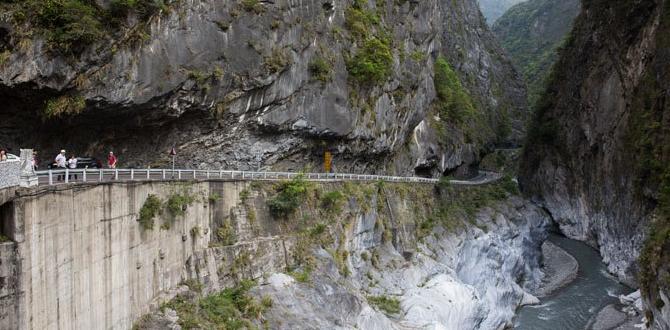Have you ever dreamed of wandering the majestic mountains of Nepal? Exploring the Himalayas can be an unforgettable adventure. But where do you start? A trekking itinerary guide can be your best friend. It helps you plan each step of your journey. Imagine standing beside towering peaks, breathing in fresh mountain air, and feeling incredible freedom.
Did you know that the Himalayas are home to some of the highest mountains in the world? Mount Everest, standing tall at 29,032 feet, is just one of them. Many people from around the globe travel to Nepal to take this trek. They want to experience the breathtaking views and vibrant culture firsthand.
With so many routes to pick from, a good trekking itinerary guide is essential. It can help you choose trails that suit your fitness level and interests. Whether you’re a beginner or an expert, there’s a path just for you. Get ready to lace up your hiking boots and explore the wonders of the Nepal Himalayas!
Ultimate Trekking Itinerary Guide In Nepal Himalayas Nestled In The Heart Of Asia, The Nepal Himalayas Offer Some Of The Most Breathtaking Landscapes And Trekking Experiences In The World. This Trekking Itinerary Guide Will Help You Navigate Through The Myriad Of Trails, Peaks, And Cultural Encounters, Ensuring That You Have An Unforgettable Adventure. Why Trekking In The Nepal Himalayas? The Nepal Himalayas Are Home To Some Of The Tallest Peaks On The Planet, Including The Majestic Mount Everest. Trekking Through This Region Offers Not Only Stunning Natural Beauty But Also An Opportunity To Experience Rich Cultural Heritage Through The Various Ethnic Communities That Inhabit The Region. Planning Your Trek When Planning Your Trek In The Nepal Himalayas, It’S Essential To Consider Several Factors, Including: 1. **Duration**: Treks Can Range From A Few Days To Several Weeks Depending On Your Desired Trail. 2. **Difficulty**: Choose A Trek That Matches Your Experience And Fitness Level. 3. **Season**: The Best Time To Trek Is Typically During Spring (March To May) And Autumn (September To November). 4. **Permits**: Ensure You Have The Necessary Permits For Your Chosen Trekking Route. Popular Trekking Routes 1. **Everest Base Camp Trek**: This Iconic Trek Takes You To The Base Of Mount Everest, Offering Stunning Views And A Glimpse Into The Sherpa Culture. 2. **Annapurna Circuit**: Known For Its Diverse Ecosystems And Panoramic Mountain Views, This Trek Is A Must For Avid Trekkers. 3. **Langtang Valley Trek**: This Trek Provides A More Off-The-Beaten-Path Experience While Showcasing Beautiful Landscapes And Rich Biodiversity. Essential Packing List A Well-Planned Packing List Is Crucial For Trekking In The Himalayas. Consider Including: – Sturdy Trekking Boots – Warm Clothing (Layers) – Sleeping Bag Suitable For Cold Temperatures – First-Aid Kit – Water Purification Tablets – Trekking Poles – Snacks And Energy Bars Conclusion With Its Awe-Inspiring Scenery And Cultural Richness, Trekking In The Nepal Himalayas Is An Experience Like No Other. By Following This Trekking Itinerary Guide, You’Ll Be Well-Equipped To Make The Most Of Your Journey Through This Magnificent Region. Whether You Are A Seasoned Trekker Or A First-Timer, The Nepal Himalayas Promise Unforgettable Memories That Will Last A Lifetime. Prepare Well, Stay Safe, And Enjoy The Adventure Of A Lifetime!

Trekking Itinerary Guide in Nepal Himalayas
Exploring the Nepal Himalayas is like stepping into a magical adventure. This trekking itinerary guide helps you plan the perfect journey. Discover breathtaking landscapes, rich culture, and friendly locals along the trails. Which trek is right for you? Each route offers unique views and experiences. Did you know that the Everest Base Camp trek is one of the most popular? Prepare for a journey filled with challenges and unforgettable memories. It’s time to lace up your boots and start your adventure!Best Time to Trek in the Nepal Himalayas
Seasonal weather patterns and their impact on trekking. Monthbymonth breakdown of trekking conditions.The best times to trek in the Nepal Himalayas vary with the seasons. Each month brings different weather. Knowing this helps prepare you. Spring and autumn are often the most popular.
- March to May: Mild and clear. Flowers bloom, making trails beautiful.
- June to August: Monsoon season. Rain is common, and paths may be muddy.
- September to November: Clear skies return. Perfect for stunning views and steady temperatures.
- December to February: Cold and snowy. Fewer trekkers but beautiful winter landscapes.
Plan your trek during spring or autumn for the best experience.
What is the best month to trek in Nepal?
The best months to trek in Nepal are October and April. These months offer clear skies and comfortable temperatures, making trekking enjoyable.
Planning Your Trek: Key Considerations
Duration and difficulty levels of various treks. Physical preparation and health considerations.Starting your adventure needs some thought! First, think about how long you want to trek. Some paths take days, while others stretch for weeks. Check out the duration and difficulty levels before you head out. Also, keep in mind, you’ll need to be fit! Regular exercise is key. Don’t forget to listen to your body. Ask your doctor about health checks, especially if you like pizza more than running. Here’s a quick guide:
| Trek | Duration | Difficulty Level |
|---|---|---|
| Everest Base Camp | 12-14 days | Challenging |
| Annapurna Circuit | 15-20 days | Moderate to Difficult |
| Langtang Valley | 7-10 days | Moderate |
With proper planning, you’ll have a trekking story to tell. So lace up those boots and get ready for fun!
Essential Gear and Packing List
Clothing and footwear recommendations for varied climates. Musthave gear for safety and comfort.Packing for a trek in the Nepal Himalayas is like preparing for a fun game of hide and seek with Mother Nature. You’ll encounter sun, wind, and even snow! First, layer your clothes. Bring a warm jacket, a light shirt, and some breathable pants. Your feet will thank you for sturdy hiking boots, perfect for rocky paths. Don’t forget must-have gear like a first aid kit, a headlamp, and a reliable water bottle. Safety and comfort are key!
| Item | Description |
|---|---|
| Clothing Layers | Base layer, insulating layer, waterproof jacket |
| Footwear | Sturdy hiking boots and warm socks |
| Safety Gear | First aid kit and headlamp |
| Comfort Items | Water bottle, snacks, and trekking poles |
Local Culture and Customs
Insights into the cultural practices of local communities in trekking regions. Importance of respecting local traditions and etiquette.The trekking areas in Nepal are rich in unique cultures. Local communities have many special customs. For example, people greet each other with the word “Namaste.” This shows respect and kindness. Visitors should also follow local traditions. This helps build good relationships and shows respect for the people. It feels rewarding to learn from them. Here are some important customs to keep in mind:
- Dress modestly in villages.
- Ask before taking photos of locals.
- Follow food etiquette during meals.
What are the key local customs to remember while trekking?
It is key to show respect for local customs. Small acts like greeting with a smile can make a big difference. Engaging with local practices can enrich your trekking experience.
Safety Tips for Trekking in Nepal
Common risks and how to mitigate them. Importance of hiring local guides and support.Trekking in the Nepal Himalayas can be a wonderful adventure, but there are risks to consider. Common issues include altitude sickness, slips, and unexpected weather. To stay safe, hydrate often and take rest days. Hiring local guides isn’t just smart; it’s like having a sherpa superhero! They know the trails and can help avoid danger. Trust me, they have the best tips to keep you smiling along the way.
| Common Risks | How to Mitigate |
|---|---|
| Altitude Sickness | Hydrate and take it slow |
| Slips and Falls | Wear proper shoes |
| Bad Weather | Check forecasts regularly |
Responsible Trekking Practices
Environmental considerations and Leave No Trace principles. How to contribute positively to local communities.Taking care of the environment is key when trekking. Keep our trails clean and beautiful. This means no littering—everything you bring in must come back out. Follow these simple rules:
- Stay on paths to protect plants.
- Keep noise down to respect wildlife.
- Use biodegradable soap away from water sources.
Support local communities by buying handmade crafts. Share stories with locals and learn about their culture. Your positive actions can make a difference!
What are Leave No Trace principles?
Leave No Trace principles are guidelines that help protect nature. They remind us to leave the outdoors as we found it, ensuring everyone can enjoy it.
Post-Trek: Recovery and Reflection
Recommended recovery practices after long treks. Sharing your experiences and supporting local initiatives.After a long trek, it’s important to recover well. Your body worked hard, and now it needs care. Resting helps muscles heal and refuel your energy. Drinking plenty of water is key too. It keeps you hydrated and helps with recovery.
Sharing your trek experiences can be rewarding. Talk about the beautiful views and the locals you met. Your words can inspire others to explore. Support local initiatives by visiting shops and donating. This helps communities thrive.
- Rest and relax for a few days.
- Stay hydrated with lots of water.
- Share your stories and inspire others.
- Support local businesses in the area.
How can I help the local community after trekking?
You can help by sharing your experience and buying local crafts or food. Your support helps their economy grow and creates jobs.
Conclusion
In conclusion, a trekking itinerary guide in the Nepal Himalayas helps you plan an amazing adventure. You can discover stunning landscapes, diverse cultures, and unique experiences. Research popular trails and prepare well. Keep your gear ready and stay safe. For more tips, check online resources or join hiking groups. Let’s get excited about exploring the beautiful Himalayas together!FAQs
Sure! Here Are Five Questions Related To Trekking Itinerary Guides In The Nepal Himalayas:Sure! When planning a trek in the Nepal Himalayas, first think about where you want to go. You can visit places like Everest Base Camp or Annapurna. Next, choose how long your trip will be. Some hikes last a few days, while others can take weeks. Also, remember to pack warm clothes, food, and water. Lastly, make sure to hire a guide or join a group for safety.
Sure! Please provide the question you want me to answer.
What Are The Most Popular Trekking Routes In The Nepal Himalayas, And What Should Trekkers Expect In Terms Of Scenery And Difficulty?Some of the most popular trekking routes in the Nepal Himalayas are the Everest Base Camp trek and the Annapurna Circuit. On these trails, you will see tall mountains, green valleys, and colorful villages. The scenery is amazing and can be very beautiful! You should expect some tough climbs, but we can take our time. Overall, the treks are hard, but they are also very rewarding!
How Can Trekkers Plan Their Itinerary To Include Acclimatization Days While Trekking In The Nepal Himalayas?When planning your trek in the Nepal Himalayas, you should include rest days. These are called acclimatization days. They help your body get used to the high altitude. You can plan to hike slowly and stop often. For example, after a long day of walking, take a day to relax and explore the area. This keeps you healthy and strong for the rest of your adventure!
What Permits Are Required For Trekking In The Nepal Himalayas, And How Can Trekkers Obtain Them?When you trek in the Nepal Himalayas, you need special permits. The main ones are the TIMS card (Trekkers’ Information Management System) and the area permit for places like Annapurna and Everest. You can get these permits at the Nepal Tourism Board or some government offices. Sometimes, if you join a guided tour, they help you get the permits. Always check the latest rules before you go!
What Are The Best Seasons For Trekking In The Nepal Himalayas, And How Do Weather Conditions Affect Trekking Plans?The best seasons for trekking in the Nepal Himalayas are spring and autumn. Spring is from March to May, and autumn is from September to November. During these times, the weather is usually clear and sunny. In winter, it can be very cold and snowy, while summer brings rain, making trails slippery. Good weather helps us enjoy our trek and see beautiful views!
What Essential Gear And Supplies Should Trekkers Pack For A Successful Trek In The Nepal Himalayas?For a great trek in the Nepal Himalayas, you need some important gear and supplies. Bring a sturdy backpack to carry your things. Pack warm clothes to keep you cozy in the cold. Don’t forget a good pair of hiking boots for comfortable walking. Also, carry a water bottle, snacks, and a first aid kit to stay safe and healthy.







